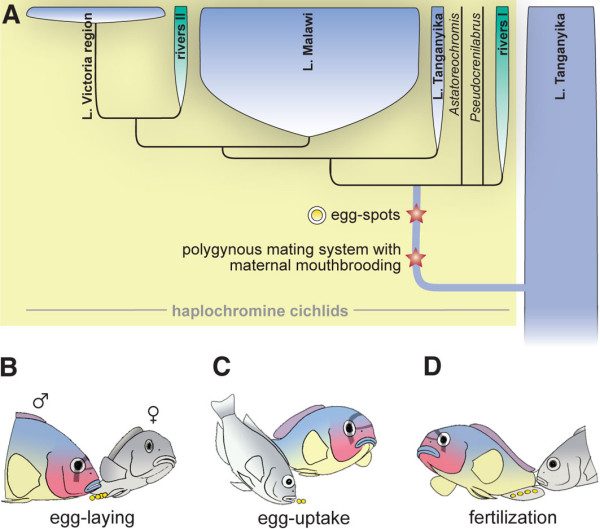Figure 1.

Haplochromine evolution in Africa. (a) Consensus phylogeny of East African cichlids based on mitochondrial [7] and nuclear DNA markers (this study). The haplochromines are derived from the much older cichlid species assemblage of Lake Tanganyika. In only about two million years of evolution, the haplochromines gave rise to spectacular adaptive radiations in Lakes Tanganyika (~30 species), Malawi (up to 1000 species) and Victoria (~500 species), as well as in other lakes and rivers in Africa (up to 200 species) [1,3,7–9]. Evolutionary innovations are mapped onto the phylogeny [7]. Note that mouthbrooding evolved several times during cichlid evolution, but only the haplochromines show a characteristic polygynous maternal mouthbrooding system with egg-spots as sexual advertisement [7,11–14,17]. (b-d) The egg-spots on the anal fins of male haplochromines play a crucial role in the haplochromines' reproductive system. Three main phases of the spawning cycle are shown: (b) the female lays a small batch of eggs in the territory of a male. (c) The female takes up the eggs into her mouth. (d) The male presents its conspicuous egg-spots on his anal fin. The female is attracted by these egg-dummies and tries to pick them up, thereby bringing her mouth close to the male's genital opening, through which sperm is released.
